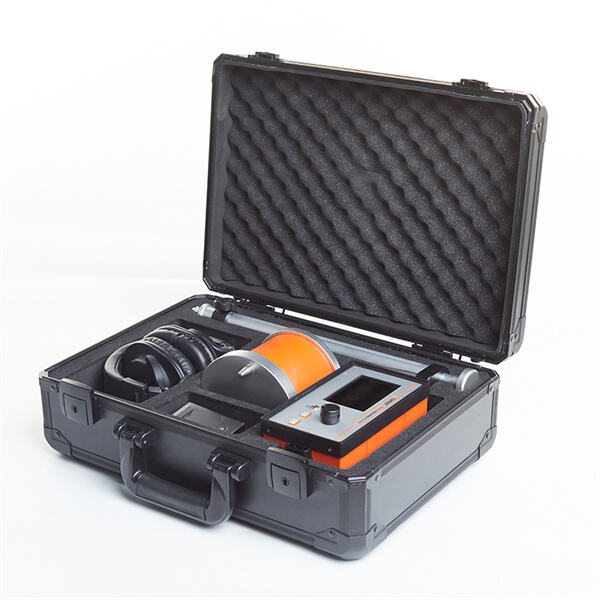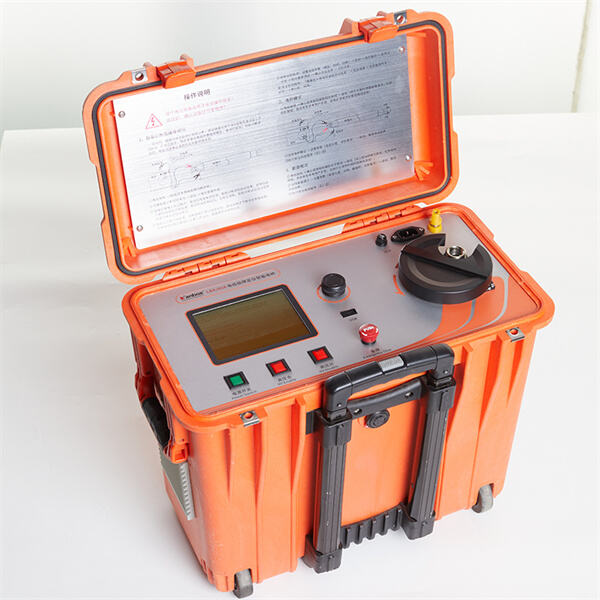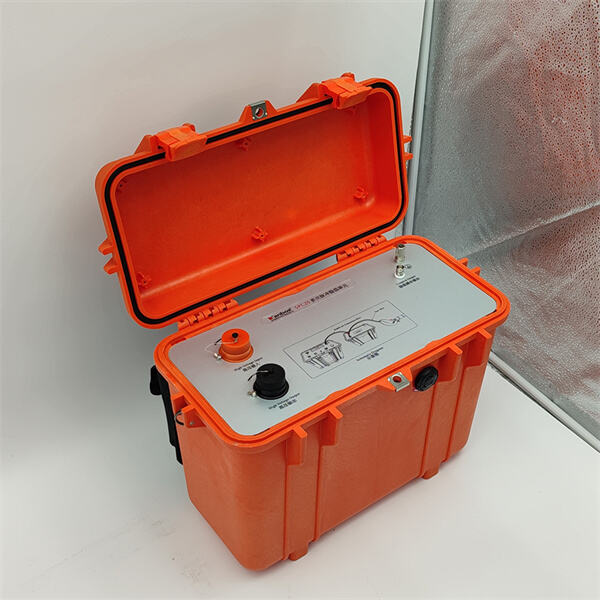Kaya ano ba, hihinging mo, ang isang cable thump-er? Ito ay mga kagamitan para sa diagnostiko na makakatulong sa mga telecommute worker. Dapat siguraduhin ng industriya ng telekomunikasyon na mayroon tayong mga serbisyo tulad ng internet, telepono at pati na rin ang telebisyon. Sa artikulong ito, matututo tayo kung ano ang mga cable thump-er, paano sila tumutulong upang hanapin ang mga defektong nasa ilalim ng lupa Pagsusuri at Diagnostika ng Kabilyo , at ang kanilang impluwensya sa mga lugar ng konstruksyon. Patuloy nating susuriin kung ang mga cable thump-er ay angkop na teknik sa paghanap ng mga problema at ipapahayag din ang ilang mga isyu sa paggamit nila
Ang mga Cable thump-er ay disenyo para subukin ang mga kable sa ilalim ng lupa. Ito ay mga kable na kailangan natin upang makakonekta sa internet at sa telepono namin.. Narito ang paraan kung paano gumagana ang isang Cable thump-er at ito'y talagang interesante. Ito ay nagdadala ng isang sobrang voltas na signal sa pamamagitan ng kable at pagkatapos ay sinusuri kung paano tumutugon ang kable sa ganitong stimulus. Sa pamamagitan nito, maaring malaman ng mga manggagawa kung ang kable ay natutumba o may iba pang problema. Mayroong dalawang elektrodo (ang mga bahagi ng aparato na nagdadala ng signal), na binabalo sa paligid ng kable. Pagkatapos magpadala ng signal, sukatan ng thump-er ang oras na kinikailangan para bumalik ang signal sa aparato. Kung masyadong mahaba ang oras ng pagbabalik ng signal, ito ay madalas na ipinapakita na may problema sa kable. Ito ay sumusubaybayan upang makatulong sa mga manggagawa na tukuyin ang problema at korektuhin ito sa pinakamabilis na posibleng panahon.
Sa mundo ng telekomunikasyon, hanapin ang mga problema ay laging isang komplikadong trabaho—ngunit dahil sa cable thump-er, binabago ang laruan. Una pa, kung may isyu sa isang Pagkilala sa Kabilyo , kinakailangang i-excavate ng mga manggagawa ang buong kable upang malaman kung ano ang problema. Ang pag-uukit na ito, gayunpaman, ay napakalabis at mahal. Maaaring maging daniw din kung ukitin mo ang isa pang linya na malapit doon. Ngayon, sa dahil sa cable thump-er, maaari ngang makilala ng mga manggagawa ang mga cowards nang hindi sumasira sa kable. Ito ay isang tiyak na tagatipid ng oras at pera. Bilang resulta, mabilis na ibabalik ang mga serbisyo sa mga customer sa mas maikling panahon, at mas mababa ang mga gastos ng mga kompanya ng telekomunikasyon kapag nag-repair ng mga linya ng kable. Kaya't nananalo lahat: satispaydo ang mga customer at may isang bagay pa ang mga kompanya na nakakakitaan.

Maaaring magamit din ang Cable thump-er kapag nasa construction site ka. Sa sitwasyon na gumagamit ang mga manggagawa ng spade o nasa pag-uukit, importante ang malaman ang eksaktong posisyon ng mga ito Lokasyon ng Cable Fault nagpapatunay na may pinakamalaking kahalagan. Ang pamamaraan na ito ay nagbibigay sa kanila ng paraan para iwasan ang pagbubreak o pagdulot ng pinsala sa mga item na ito habang gumagawa sila ng kanilang trabaho. Upang mahanap nang madali ang mga kable, ginagamit ang cable thump-er. Ang mga manggagawa na alam kung saan naroroon ang mga kable ay maaaring gamitin ang cable thump-er bago sila magsimulang magdig. Ito'y nagiging sanhi para maipapatupad ang trabaho nang walang pagkakahatid o pagdulot ng pinsala sa mga kable. Mga kable ay napakahirap, kaya't kinakailangang iprotect ang mga ito pati na rin ang mga manggagawa (at mga aksidente). Ito ay nagiging sanhi upang maiwasan ang mahal na pagsasawi na maaaring mangyari dahil sa pinsala sa isang kable habang nagdaragdag.

Bagaman ang mga cable thump-er ay mas epektibo at gamit ngunit hindi sila laging ang pinakamahusay na paraan upang hanapin ang bawat uri ng problema. Halimbawa, ang mga shorts dahil sa ulan o karos sa kabelo ay maaaring di makikita. Pati na rin, ang dating na kabelo ay minsan ay kinakailangan ng pagpaparami mula sa malakas na senyal na ginagamit ng cable thump-er. At ito ay maaaring mangyari na kailangan mo nang mahal na pagsasara sa huli. Kaya nangangailangan itong ipagpalagay ang cable thump-er kasama ng iba pang uri ng paraan ng paghahanap ng problema. Maraming manggagawa ang gumagamit ng higit sa isang opsyon upang siguraduhing nakukuha nila ang tamang resulta. Ito ay nagiging sanhi ng pagpigil sa pagkukulo at nagiging sanhi ng pagpigil sa mahal na pagbabago.

Habang ang mga cable thump-er ay mahalagang mga kasangkapan sa iba't ibang sitwasyon, hindi rin sila libre sa mga hindi inaasahang epekto. Halimbawa, ang cable thumping ay batay sa prinsipyong ipinapakita ng malakas na elektrikal na signal sa lupa; kung ma-reflect ang ganitong signal at dumating sa iba pang elektronikong aparato, magiging sanhi ito ng pagiging-bug. Maaaring mapektuhan nito ang mga aparato tulad ng mga gamot para sa medikal o iba pang mga kable ng komunikasyon na nakainstala malapit dito. Kaya, dapat gamitin ang mga cable thump-er nang may katiyakan at kinakailangan ang pag-iingat upang maiwasan ang hindi inaasahang pagiging-bug. Maaari ding makaka-irita ito sa mga kapitbahay habang ginagamit ang cable thump-er. Maaaring marinig nila o pati na kahit mapansin lamang ang mga resonansya ng malakas na impulso. Na nagiging isa pang dahilan din kung bakit dapat ipagdaan ang cable thump-er nang hindi makakabagabag sa mga kapitbahay.